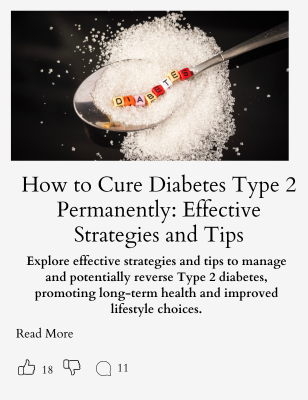Dental and vision insurance plans are essential for maintaining good health. These plans help cover the costs of regular checkups, treatments, and eye exams.
Individual and family dental insurance plans offer affordable options for protecting your oral and visual health.

When looking for coverage, you’ll find different types of plans. Some cover only basic services, while others include more extensive treatments.
It’s important to compare options and find one that fits your needs and budget.
Key Takeaways
- Dental and vision insurance plans help cover the costs of essential health care services
- Different plan types are available, ranging from basic to comprehensive coverage
- Bundled dental and vision plans can offer convenience and potential cost savings for families
Understanding Dental and Vision Insurance
Dental and vision insurance plans help cover the costs of eye and oral care. These plans offer different levels of coverage for various services and procedures.
The Basics of Dental Insurance
Dental insurance helps pay for oral health care. Most dental insurance plans cover preventive care, like routine exams, cleanings, and x-rays. Some plans also pay for basic treatments such as fillings.
Plans often use a 100-80-50 structure. This means they pay:
- 100% for preventive care
- 80% for basic procedures
- 50% for major treatments
Dental plans may have waiting periods for certain services. They also typically have yearly maximums, which is the most the plan will pay in a year.
Some plans use a network of dentists. Staying in-network usually costs less.
It’s important to check if your dentist is in the plan’s network before signing up.
The Basics of Vision Insurance
Vision insurance helps pay for eye care and eyewear. Most plans cover yearly eye exams and give an allowance for glasses or contacts.
Vision coverage often includes:
- Annual eye exams
- Frames and lenses for glasses
- Contact lenses
- Discounts on laser eye surgery
Plans may have copays for services. They might also limit how often you can get new glasses or contacts.
Like dental plans, vision plans often use networks. Using in-network eye doctors and shops can save money.
It’s wise to check if your eye doctor is in the plan’s network before choosing a plan.
Types of Dental Insurance Plans
Dental insurance plans come in different varieties to suit various needs and preferences. Two popular options are Preferred Provider Organization (PPO) plans offered by major insurers like Delta Dental and Cigna.
Delta Dental PPO
Delta Dental PPO plans offer flexibility and cost savings. Members can visit any licensed dentist, but save the most when choosing a Delta Dental PPO provider. These plans typically cover 100% of preventive services.
Delta Dental PPO plans have no referrals needed for specialty care. They often include coverage for major services like crowns and root canals. Annual maximums and deductibles vary by plan.
DeltaCare USA is another option. It’s a prepaid plan with set copayments for covered services. Members choose a primary care dentist from the DeltaCare USA network.
Cigna Dental PPO Network
Cigna Dental PPO plans provide access to a large network of dentists. Members can see any licensed dentist but save more in-network. Preventive care is often covered at 100% with no deductible.
These plans usually cover basic and major services at varying levels. Some Cigna plans offer orthodontic coverage for both children and adults. No referrals are needed for specialty care.
Cigna dental insurance products may include features like 24/7 customer service and online tools to help members manage their dental health.
Choosing the Right Family Plans
Family dental and vision plans offer important coverage for the whole household. Key factors to consider include benefits for preventive care, costs, and provider networks.
Family Dental Coverage Considerations
When selecting a family dental plan, look at the covered services. Many plans fully cover preventive care like cleanings and check-ups. This helps families maintain good oral health.
Cost is another important factor. Plans may have different premiums, deductibles, and copays. Families should compare these costs across plans.
Provider networks also matter. Some plans let families visit any dentist. Others have specific in-network providers. Families should check if their preferred dentists are covered.
Coverage limits are worth noting. Plans may have annual maximums on benefits. They might also have waiting periods for certain services.
Understanding Family Vision Coverage
Vision plans typically cover eye exams and help pay for glasses or contacts. Families should check how often the plan covers these services.
Many plans offer discounts on frames and lenses. This can help reduce out-of-pocket costs for families who need multiple pairs of glasses.
Provider networks are important for vision plans too. Families should see if their preferred eye doctors or optical stores are in-network.
Some vision plans include extra benefits. These might cover things like LASIK surgery or special lenses. Families with specific vision needs should look for these features.
Cost Considerations for Insurance Plans
Dental and vision insurance plans have various costs to consider. Premiums, deductibles, copayments, and annual maximums all affect the total expense for individuals and families.
Calculating Premiums and Deductibles
Premiums are the monthly fees paid for insurance coverage. They vary based on the level of coverage and the insurance provider. Higher premiums often mean lower out-of-pocket costs.
Deductibles are the amount paid before insurance kicks in. Plans with lower premiums typically have higher deductibles. For example, a plan might have a $500 deductible for major procedures.
Some plans offer $0 deductibles for preventive care. This encourages regular check-ups and cleanings.
Copayments and Annual Maximums
Copayments are fixed amounts paid for specific services. They differ based on the type of procedure. For instance, a routine cleaning might have a $20 copay, while a filling could be $50.
Some plans use a percentage-based system. An 80/60/40 plan covers 80% of preventive care, 60% of basic procedures, and 40% of major procedures.
Annual maximums cap the amount an insurer will pay in a year. Once reached, individuals pay full price for services. Common maximums range from $1,000 to $2,000 per person.
Out-of-network charges are usually higher. Staying in-network helps control costs.
Coverage Details for Dental Insurance
Dental insurance plans typically cover a range of services. These are grouped into categories based on their complexity and frequency.
Preventive Services Coverage
Most dental insurance plans fully cover preventive services. These often include:
• Regular check-ups and cleanings (usually twice a year)
• X-rays
• Fluoride treatments
• Sealants for children
Preventive care aims to catch issues early. This can help avoid more serious problems later. Some plans may have waiting periods for these services.
Coverage for Basic and Major Services
Basic services usually get partial coverage. These may include:
• Fillings
• Simple extractions
• Root canals
Major services often have lower coverage levels. These can include:
• Crowns
• Bridges
• Dentures
• Complex oral surgery
Coverage percentages vary by plan. A common split is 80% for basic and 50% for major services. Many plans have annual maximums. This is the most they’ll pay in a year. Exclusions and limitations may apply to certain procedures or conditions.
Important Aspects of Vision Insurance
Vision insurance helps cover eye care costs. It focuses on regular checkups and vision correction needs.
Routine Exams and Screenings
Vision insurance plans typically cover yearly eye exams. These checkups are key for spotting eye issues early. An eye doctor checks vision sharpness and looks for signs of eye diseases.
Many plans also cover screenings for problems like glaucoma. These tests can find issues before symptoms appear. Early detection often leads to better treatment results.
Some plans may limit how often you can get exams. It’s good to know these rules when picking a plan.
Glasses and Contact Lenses Coverage
Most vision plans help pay for glasses or contact lenses. They often cover a portion of the cost for frames and lenses.
Many plans offer a set amount for frames every year or two. For lenses, they might cover basic options fully. Special features like anti-glare coating may cost extra.
Contact lens coverage varies by plan. Some plans give a yearly allowance for lenses. Others might cover the full cost of certain brands.
It’s smart to check what brands and styles are covered. This helps avoid surprise costs when getting new glasses or contacts.
Understanding Waiting Periods
Waiting periods affect when you can start using certain dental and vision benefits. Some plans have no waiting periods, while others require you to wait before covering specific services.
Dental Insurance Waiting Periods
Dental insurance waiting periods are set times before you can get full coverage for some dental procedures. These periods can last from a few months to over a year. Most plans cover preventive care right away.
Basic and major dental work often have waiting periods. Fillings and extractions may have a 6-month wait. Crowns or dentures might need a 12-month wait.
Some plans offer no waiting period for any services. These plans may cost more but let you use benefits sooner.
Waiting periods help insurance companies manage costs and prevent people from buying insurance only when they need expensive treatments.
Vision Insurance Enrollment Periods
Vision insurance plans often have different rules for enrollment and coverage start dates. Many vision plans don’t have waiting periods like dental plans do.
You can usually start using your vision benefits as soon as your coverage begins. This includes eye exams, glasses, and contact lenses.
Some vision plans have a service area. This means you must live in a certain area to be eligible for the plan.
Open enrollment is a key time to sign up for vision insurance. This happens once a year, often in the fall. Some plans also allow enrollment after life events like marriage or having a baby.
Dental Services and Treatments
Dental insurance plans cover a wide range of services to maintain oral health. These range from basic check-ups to complex procedures like implants and orthodontics.
Routine Check-Ups and Cleanings
Regular dental visits are key to preventing problems.
Most dental plans cover preventive care fully. This includes check-ups and cleanings twice a year.
During check-ups, dentists look for cavities and gum disease. They may take x-rays to spot hidden issues. Cleanings remove plaque and tartar buildup.
If problems are found, fillings may be needed. These repair small cavities. For larger decay, crowns protect and restore teeth.
Root canals treat infected tooth pulp. This saves teeth that might otherwise need removal. After a root canal, a crown is often placed to strengthen the tooth.
Orthodontics and Implants
Orthodontics straighten teeth and fix bite issues. Braces are the most common treatment. Clear aligners offer a less visible option.
Many plans cover orthodontics, but often with limits. There may be age restrictions or lifetime maximums.
Dental implants replace missing teeth. They involve placing a metal post in the jaw. A crown is then attached to the post. Implants look and function like natural teeth.
Dentures are another option for missing teeth. They can replace some or all teeth. Partial dentures clip onto remaining teeth. Full dentures replace all teeth in the upper or lower jaw.
Finding Providers Within Networks
Dental and vision insurance plans often have networks of providers. Knowing how to find in-network and out-of-network options can help you get the most from your coverage.
The Benefits of In-Network Providers
In-network providers have agreed to offer services at lower rates. This means you’ll pay less out of pocket. Many plans have large dentist networks with thousands of dentists to choose from.
Using in-network dentists also means less paperwork. The dentist will bill your insurance directly. You’ll only need to pay your share at the visit.
To find in-network dentists:
- Check your plan’s website
- Use the online provider search tool
- Call customer service for help
Steps for Finding Out-of-Network Options
Some plans let you see out-of-network dentists. This gives you more choices, but costs may be higher.
To find out-of-network options:
- Check if your plan allows out-of-network care
- Ask your dentist if they take your insurance
- Get a cost estimate before treatment
Cigna Healthcare and other insurers often have tools to compare in-network and out-of-network costs. This can help you decide if going out-of-network is worth it.
Remember to check if your plan has different rules for routine care versus major procedures. Some plans only cover in-network care for certain services.
Additional Considerations for Insurance
When choosing dental and vision insurance, it’s crucial to look beyond just the monthly premium. Copayments, coinsurance, provider networks, and service areas can greatly impact your out-of-pocket costs and access to care.
Evaluating Copayments and Coinsurance
Copayments are fixed amounts you pay for services, while coinsurance is a percentage of the total cost.
For dental plans, preventive care often has no copay. Basic procedures might have a $50 copay, while major work could require 50% coinsurance.
Vision plans typically have copays for eye exams and materials. For example, a plan might charge a $10 copay for an exam and $25 for lenses. Frames and contact lenses often have an allowance, with you paying any amount over that.
It’s important to compare these costs across different plans. A plan with a lower premium but higher copays might end up costing more if you need frequent care.
Networks and Service Areas
Dental PPO networks offer more flexibility in choosing providers. In-network dentists agree to discounted rates, which can save you money. Out-of-network care is often covered, but at a lower rate.
Some plans, like the Cigna Dental Choice Plan, offer larger networks. This can be especially helpful if you travel frequently or live in a rural area.
Vision insurance networks typically include both independent optometrists and retail chains. Check if your preferred eye doctor is in-network before choosing a plan.
Service areas vary by insurer. Some plans are only available in certain states or regions. Make sure the plan you’re considering covers your home area and any places you frequently visit.
Frequently Asked Questions
Dental and vision insurance plans have many options to consider. Plan types, costs, and coverage vary based on individual needs and location.
What are the benefits of bundling dental and vision insurance?
Bundling dental and vision insurance can provide a more complete picture of overall health. It often leads to cost savings compared to buying separate plans.
Bundled plans make it easier to manage healthcare needs. They typically offer coordinated care between eye doctors and dentists.
How do costs compare across individual and family dental and vision insurance plans?
Individual plans usually have lower monthly premiums but higher out-of-pocket costs. Family plans tend to have higher premiums but lower overall costs per person.
Some plans start at $20 per month for basic coverage. More comprehensive plans can cost $50 or more per month.
What should seniors consider when looking for dental and vision insurance?
Seniors should look for plans that cover common age-related issues. These include dentures, implants, and cataract surgery.
Medicare doesn’t typically cover routine dental and vision care. Seniors may need separate plans or Medicare Advantage options.
What are the differences between PPO and DMO dental plans, and which is more advantageous?
PPO plans offer more provider choice but often have higher costs. DMO plans have a smaller network but lower costs.
PPOs allow out-of-network care, while DMOs require in-network providers. The best choice depends on personal preferences and needs.
How does dental and vision insurance coverage vary by state, such as in Texas or California?
Coverage and costs can vary widely by state due to different regulations. Some states require certain benefits to be included in all plans.
Network sizes and available plan types may also differ between states. It’s important to check specific state offerings when choosing a plan.
What factors determine the best full coverage dental insurance for an individual or family?
The best plan depends on individual needs, budget, and expected dental care.
Look at annual maximums, which can range from $1,000 to $3,000.
Consider coverage levels for different procedures.
Some plans cover 100% of preventive care, 60% of basic procedures, and 40% of major procedures.


















